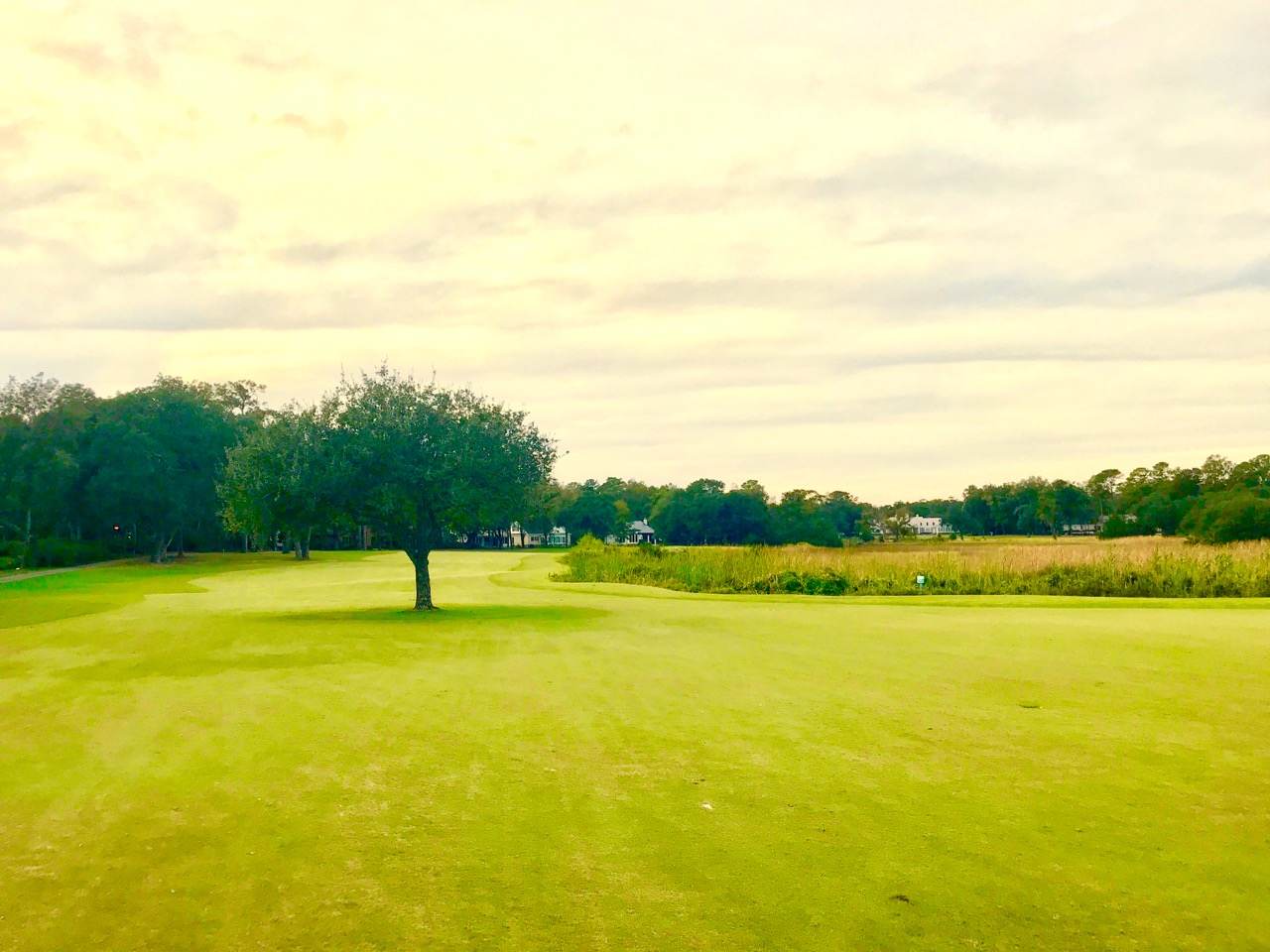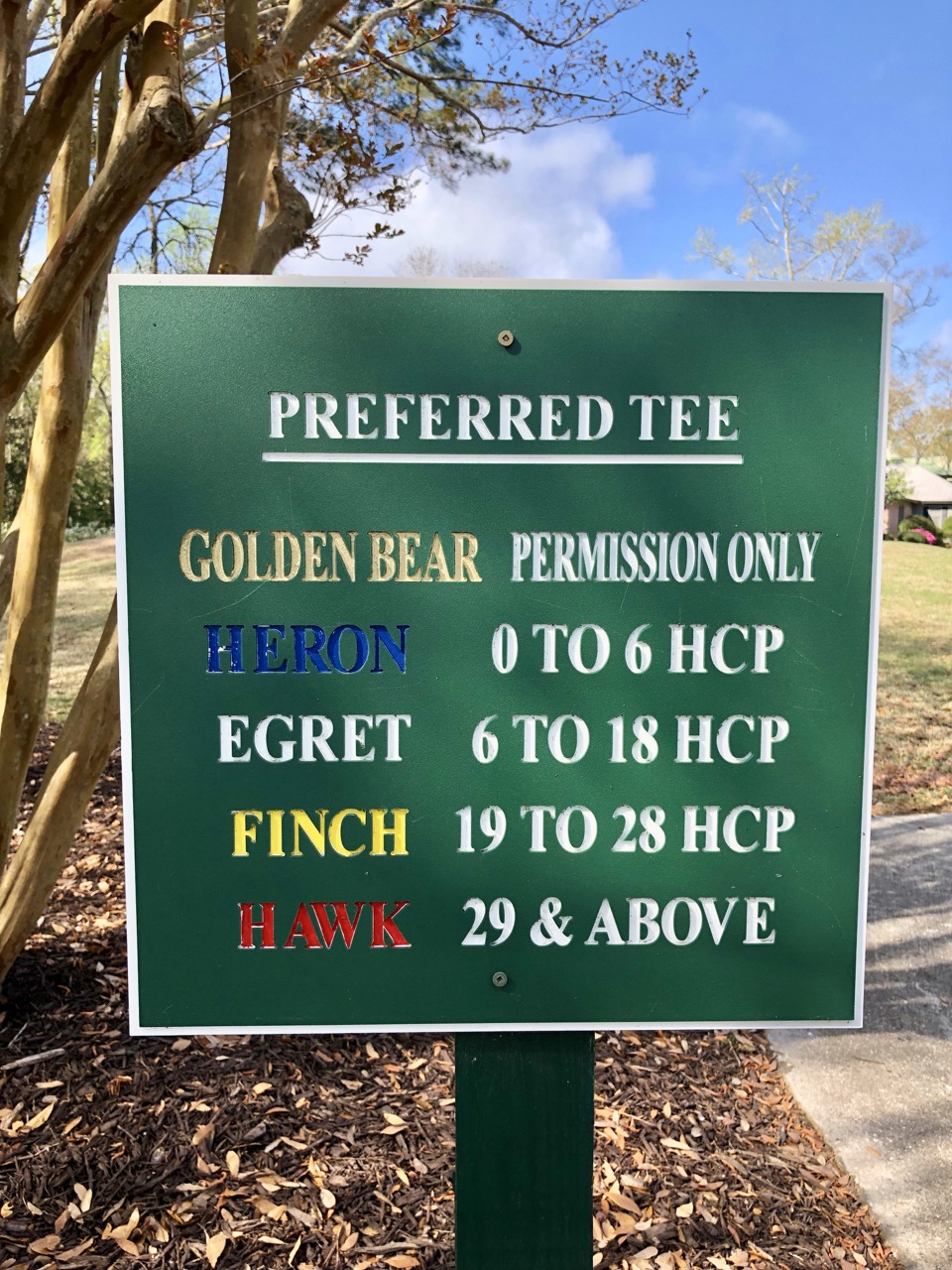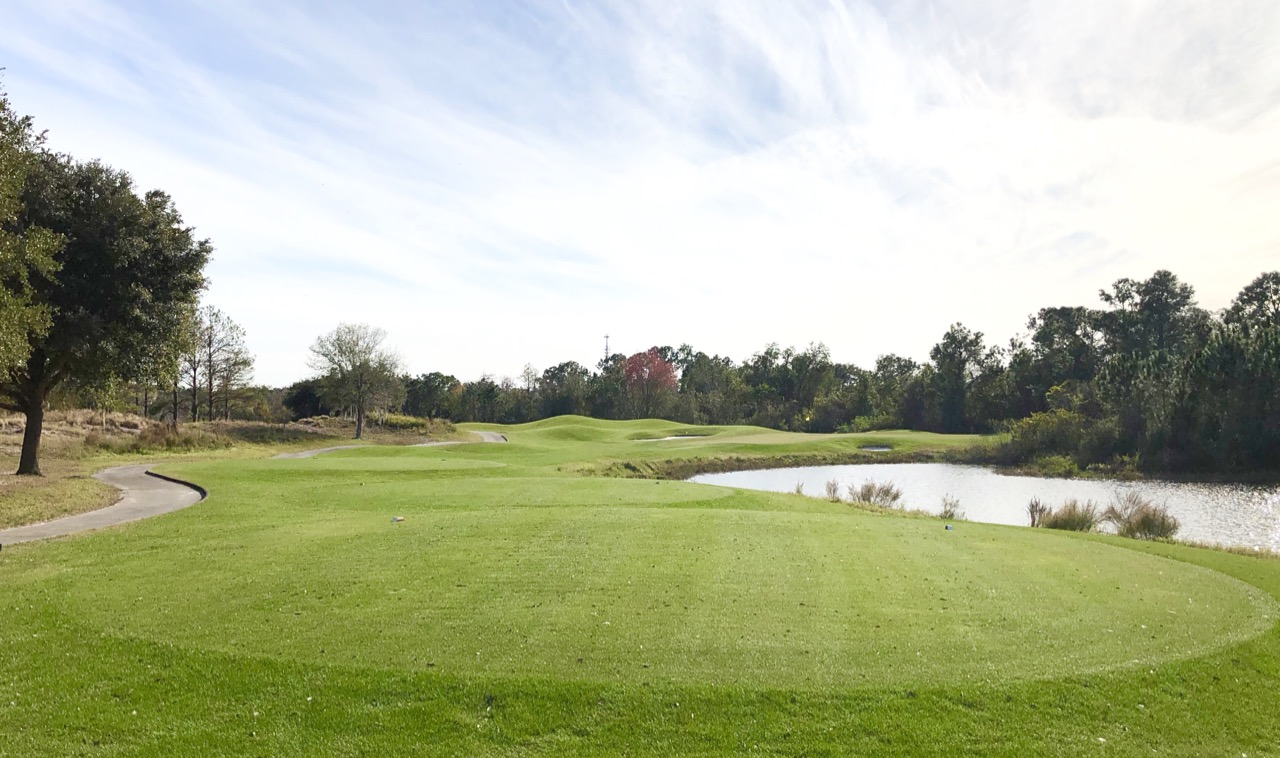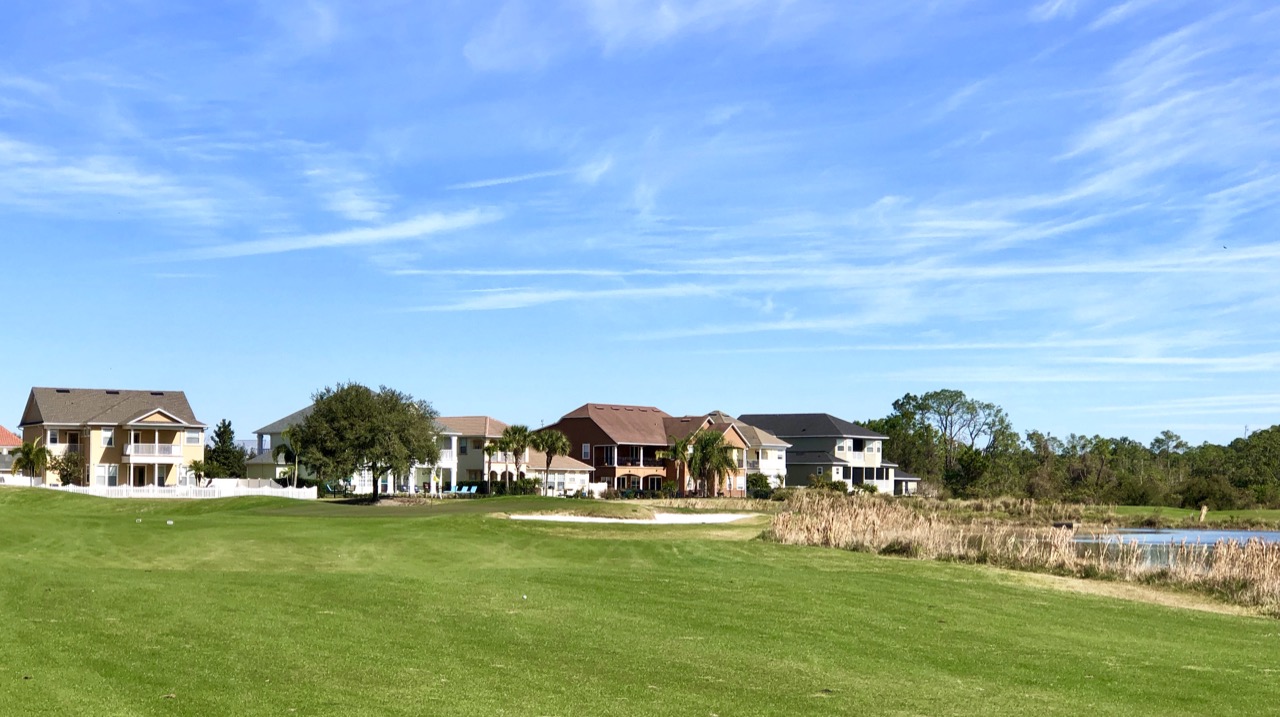When Jack Nicklaus’ golf course design career was in its infancy, he developed a particular design quirk to call his own -– like Pete Dye’s railroad ties, or Tom Fazio’s cloverleaf bunkers and “buried” cart paths. For Nicklaus, it was trees in fairways. Nowhere was this quirkiness more in play -– literally and figuratively -– than at Pawleys Plantation, a semi-private layout in Pawleys Island, SC, that is a scoring challenge for newcomers and members alike.
Whereas many designers punish tee shots that stray from the center lane of fairways, Nicklaus puts obstacles in the middle of the typically safe areas off the tee, forcing play to the edges. For example, on the par 5 4th hole, a string of three fair-sized bunkers split the fairway in two about 180 yards to 230 yards off the men’s tees. Using the fairway to the right of the bunkers provides the best angle for a long approach shot; a play to the left of the bunkers provides a shorter approach shot, but over a wide fairway bunker that extends all the way to greenside.
But it is Nicklaus’ fairway trees at Pawleys that have been a constant thorn in the side of members and visiting golfers looking to at least shoot around par, once they subtract their handicap from their scores. Until two weeks ago, the tree in the middle of the fairway at #14 at Pawleys Plantation made players think about their tee shots. Not anymore. The tree was removed at designer Jack Nicklaus' recommendation.
Until two weeks ago, the tree in the middle of the fairway at #14 at Pawleys Plantation made players think about their tee shots. Not anymore. The tree was removed at designer Jack Nicklaus' recommendation.
The first close encounter with a tree at Pawleys Plantation is on #5, a medium sized par 4 whose main feature is a large pond in front of the green. A well-smacked drive is required to leave a short, lofted iron approach to a typically firm green. But Nicklaus left a tall pine standing at the left edge of the fairway, and a perfect looking drive toward the middle can catch one of the tree’s branches, leaving almost 200 yards over the water to the tightly guarded green.
The epitome of Nicklaus’ design idiosyncrasy is the sprawling and tall live oak at dead center of the 9th fairway that covers 60 percent of fairway. On the theory that a tree is 90 percent air, I typically try to fly my ball over, especially if I am playing the “executive” tees. That works out about half the time. The best play is either to the right of the tree, bringing rough and woods into play; or the narrower path to the left, where even more woods and a sprawling oak just to the left of the fairway may necessitate a pitch out to the middle of the fairway on the par 4. No matter the approach, the green is extremely difficult hit as it is the most elevated on the golf course and not very deep.
Two weeks ago, after a visit and tour by Nicklaus in January of his 30-year-old course, workmen cut down a tree that was dead center on the par 5 14th hole. It wasn’t a huge tree, but it was about 10 to 20 yards beyond most good drives, and if you were behind it, you had no choice to skim a shot under its branches. Its position forced one to think about placement off the tee. Take it from a 20 year member at Pawleys Plantation: The Jack Nicklaus design is tougher than it appears, or says.
Take it from a 20 year member at Pawleys Plantation: The Jack Nicklaus design is tougher than it appears, or says.
A wide swatch of fairway to the right was the safe path but forced a layup shot over marsh. A shot to the left of the tree made for a shorter shot at an easier angle, but the cart path there and tight out of bounds along the edges of residents’ properties made a tee shot in that direction a fool’s paradise.
Nicklaus admitted during his visit in January that he thought the golf course was too hard for even decent players, and he recommended that greens that had drifted away from bunkers be restored to their original sizes, that many of the fairway bunkers be grassed in and that “a copper nail” would be enough to fell the tree on 14.
A few years ago, with Nicklaus’ affirmation, the club removed a couple of live oak trees that guarded the green at the long par 5 11th. (See my original article here. I don’t miss those trees, although they were a lot prettier than the solo tree on the 14th. But the latter tree’s demise, in my opinion, was a bad decision, an accommodation to those who felt punished after a self-described “good” drive ruined their prospects for a layup short of the green -- as if a shot straight down the middle of every fairway is always a good drive.
Even excellent golf course designers aren’t always right.
A week before Johnny Miller retires from the golf tournament broadcast booth, I had the opportunity to play one of the 17 layouts he designed. Harmony Preserve Golf Club is located smack in the middle of one of those golf communities that offers retirees an alternative to the massive Villages in central Florida, albeit on a much smaller scale (one golf course compared with The Villages’ 35). You can tell that considerable planning went into the development of Harmony Preserve, which is located pretty much in the Middle of Nowhere, Florida, between Orlando and Vero Beach. (One of the real estate sites pitching homes in Harmony indicates that the “Florida Mall is just 30 miles away.”) Water is featured on every hole at Harmony Preserve, although forced carries are rare.
Water is featured on every hole at Harmony Preserve, although forced carries are rare.
A mix of single-family homes and townhouses, with a “town center” section just inside the gates, the community was designed to overcome its remote location with a basic array of services on site; actually very basic in that the “center” is just two blocks wide. By the looks of it, Harmony’s target audience is independent-minded retirees desirous of an active retirement at a fair cost. Homes start in the low $200s, and golf memberships are sharply priced beginning at $2,750 annually for as much golf as you want to play ($3,750 for unlimited play with a cart). You won’t do better than that at most nicely maintained golf clubs in Florida.
What about the golf course? First of all, this is Florida and, therefore, don’t expect any dramatic contours from fairway to green that weren’t created by bulldozers. Those who want the occasional exercise of a good walk will find Harmony Preserve quite accommodating. Although there is a water feature on every hole, the fairways are quite generous; a few bunkers at greenside will give you pause as you prepare your approach shots. I found the greatest challenges of the golf course almost exclusively in the greens whose contours were sometimes obvious but, for the most part, subtle. This was my first round of the year, an excuse of sorts, but there is no excuse other than tricky greens for a half dozen three-putted greens. Homes in the Harmony Preserve community are, for the most part, sited close together, but prices start at very reasonable levels, in the low $200s. Golf membership pricing is a bargain too.
Homes in the Harmony Preserve community are, for the most part, sited close together, but prices start at very reasonable levels, in the low $200s. Golf membership pricing is a bargain too.
I understand from other reviews of Harmony that alligators keep a wary eye on golfers during the warmer months. On the coldish day we played, we didn’t see a one.
I was expecting a golf course that reflected Johnny Miller’s personality, or at least the one he’s expressed on air for the last three decades. But Harmony Preserve, while a perfectly enjoyable experience, lacked much drama (except on some of those greens). Miller, like former PGA stars Gary Player and Greg Norman, seemed to overcompensate in his design for Harmony. (Player’s layout for The Cliffs at Mountain Park and Norman’s at The Reserve in Pawleys Island, both in South Carolina, do not reflect the bravado of their personalities, or the make or break style of their golf games back in their heydays.) That is not criticism; all these golf courses, located in areas frequented by golfing retirees, may not reflect their artists’ personalities, but they certainly will please their audiences.
Harmony Preserve
Harmony, FL
28 miles to Orlando International Airport
45 minutes to Melbourne, FL
55 minutes to Walt Disney World, Orlando
Homes from the low $200s
Sample home for sale: Click here
Golf course opened 2002, designed by Johnny Miller
7,428 yards from Miller tees, Rating 76.1, Slope 136
6,413 yards from White tees, Rating 71.1, Slope 126
5,408 yards from Red tees, Rating 65.9, Slope 114
Full golf memberships from $2,750 annually
If you would like more information on Harmony Preserve, or to arrange a visit, please contact us.
Page 71 of 1023























